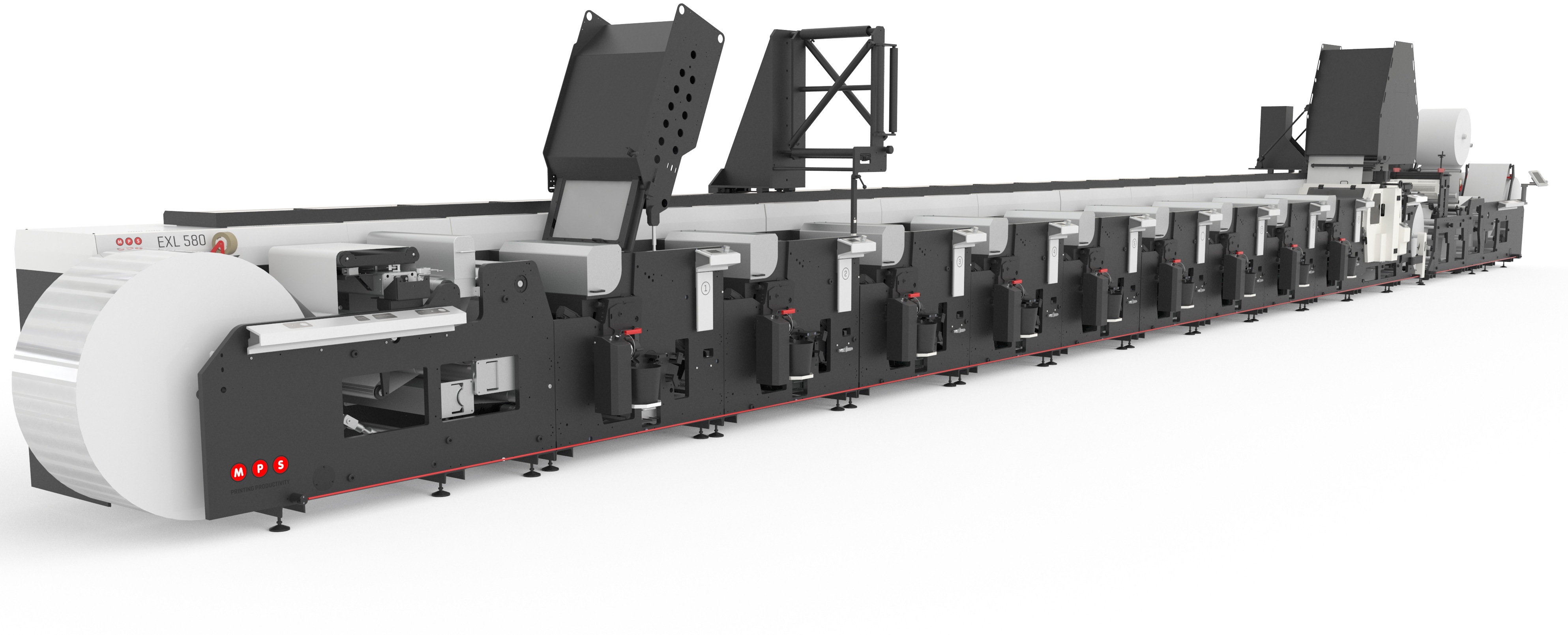Flexible packaging is one of the biggest sectors in the printing industry.
Printing is commonly done on wide web printing presses due to large volume jobs, but it’s becoming more popular on narrow or medium web presses offering more variety and shorter runs.
Scan the shelves at any supermarket to see a vast range of flexible packing available. A drop in a bucket compared to what’s being printed for the entire market!
The printing process
A flexible packing job is usually run roll-to-roll and sent to the converting department to be made into carry bags, satchels, food wraps, sacks, bread bags, blister packs and more.
It can also be sent for laminating and slitting if it’s wide web and not done inline. If it’s printed with multiple images stepped across the web then it will be sent to the converting process.
Types of commonly used presses:
- Narrow web flexographic
- Medium web flexographic
- Hybrid press (low waste and excellent for short run jobs)
- Combination press (combining more than one printing process or application; interchangeable or fixed units)
- CI. Central Impression (most common in wide web)
- Stack press
- Gravure
- Offset / Lithography (less commonly used in flexible packaging)
 MPS EXL-P Packing press 530 to 680mm
MPS EXL-P Packing press 530 to 680mm
(Click here for EXL-p product details)
Flexible packaging can be printed with many of the above processes, but a majority of products are printed using flexography technology with solvent-based, water-based, or even dyes (for example cellophane when printed using wide web C.I. presses).
On narrow to medium web width presses it’s common to have flexographic and gravure combined with inline lamination and less common to use embellishments due to the flexibility of the substrate.
Although, embellishments are possible depending on customer requirements and substrate used, which is an advantage narrow and medium web presses have over wide web presses. Special varnishes can also be used to create eye-catching effects.
Narrow web advantages
- An inline narrow web press is easier and quicker to set up – better for short runs
- Wash up times are reduced due to size and layout of the press
- You can do embellishments like cold foil and special varnishes
- Flexo uses less harmful volatile organic compound (VOC) inks for the environment than gravure presses that use solvent inks
Choosing the best press for the job
When a customer wants to print a flexible packaging job for a new product, the specifics should be discussed with the printer in advance such as the product’s use, shelf life, food standards or not, ink type, design, number of colours, and types of substrate (polypropylene or BOPP etc.). This will help the printer decide what type of press and printing process is best to run the job.
Once this is decided, if a press approval by the customer is required, this is a good time to also do the colour standards and record important information on a history card such as aniloxes, viscosity, and any addition to ink if colour match was required.
These steps are all very important for the next run to go smoothly. Both the printer and their customer should have printed samples and a copy of the colour standard in case any issues arise (recommended for every print job - not just flexible packaging).
With the flexible packaging industry worth up to hundreds of billion dollars a year, and more products available with quick turnaround, flexographic printing is commonly used due to lower cost.
However, digital printing of flexible packaging is gaining in popularity with superior print quality and very low waste (especially with shorter runs). It’s a huge growth opportunity in the flexible packaging and print industry in general.
A hybrid solution can bridge the gap between conventional flexo and digital printing machines, such as the EF SYMJET. The ongoing ability to exchange print technologies and produce labels in either flexo or digital print, or a combination of both technologies, is a significant long-term advantage.
Some label designs are better suited to print partly in flexo, and the rest digitally. When the job size approaches flexo volumes, the hybrid is a versatile solution to efficiently meet these needs.
 MPS EF SYM JET 340 to 430mm Hybrid flexographic and digital press
MPS EF SYM JET 340 to 430mm Hybrid flexographic and digital press
(Click here for EF SYMJET product details)
Get in touch
The topic of flexible packaging is too extensive to cover everything in this snippet - this just highlights some of the basics.
I would appreciate any feedback or suggestions on this or any of my other snippets.
You can reach me via LinkedIn or via email k.marsh@mps4u.com.